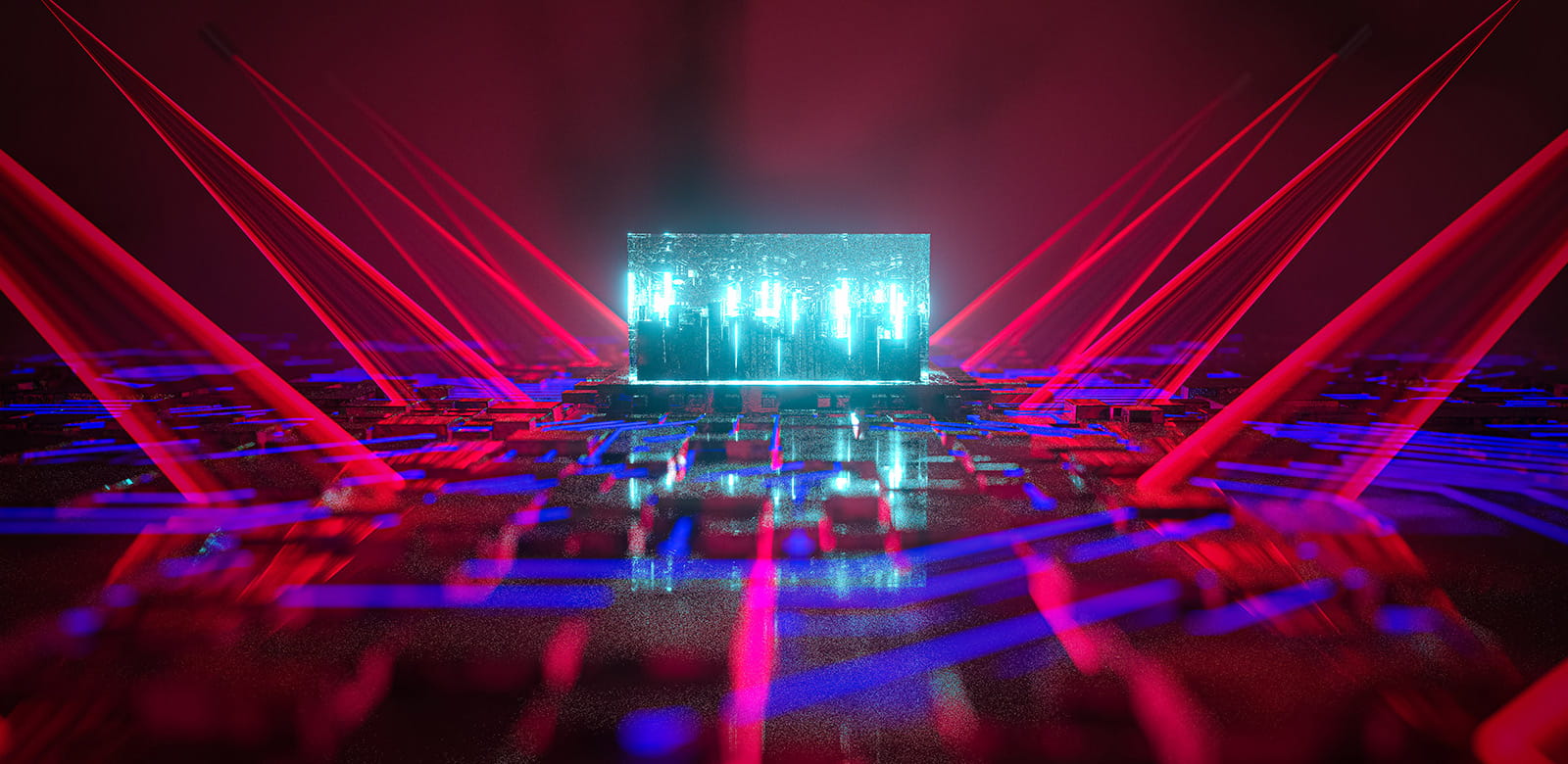Democratizing information is one of the many ways that we build a safer, more connected world. With over 60,000 patents, we’re one of the most innovative companies. And we like to share that innovation.
Our patents available for licensing range in scope from artificial intelligence and machine learning to additive manufacturing and infrared sensors.
Artificial Intelligence and Machine Learning
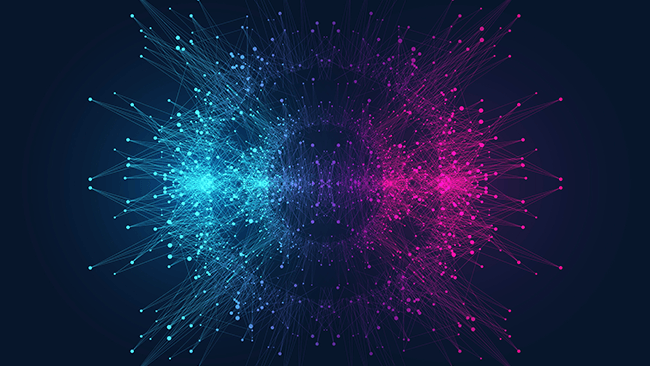
RTX has had a rich history of Research and Development (R&D) in machine learning (ML) and artificial intelligence (AI) over the last decade. This work spans theoretical to field-deployed applications and our innovations have bridged problems from natural language processing to network flows and cybersecurity.
With RTX's role in developing fundamental research and the integration of AI/ML technologies into broader systems, there are strong opportunities for partnership, integration and collaboration in leveraging RTX's Intellectual Property.
In addition to the registered Intellectual Property, RTX has integrable AI/ML components and end-to-end capabilities that can help advance your business.
Using deep learning to advance state of the art in noisy speech recognition and related capabilities – in the hardest conditions of low data and noise.
Exemplary US Patents
- US #8595222; Methods and systems for representing, using and displaying time-varying information on the semantic web
- US #7797156; Speech analyzing system with adaptive noise codebook
- US #9830910; Natural voice speech recognition for flight deck applications
- US #8260817; Semantic matching using predicate-argument structure
- US #9824689; Speech recognition for avionic systems
Bridging the language barrier in informal or low-resource conditions with world-wide leading machine translation technologies. Top performance in innovations in translation accuracy and challenging languages like Chinese and Arabic.
Exemplary US Patents
- US #8131536; Extraction-empowered machine translation
- US #8515749; Speech-to-speech translation
- US #9710463; Active error detection and resolution for linguistic translation
- US #7774197; Modular approach to building large language models
- US #8249856; Machine translation
Transforming unstructured content into useful analysis, including the application of machine learning techniques to semantic classification of video and images
Exemplary US Patents
- US #7890539; Semantic matching using predicate-argument structure
- US #20190354857; Machine learning using informed pseudolabels
- US #8554710; Converting video metadata to propositional graphs for use in an analogical reasoning system
- US #20200167605; Computer architecture for artificial image generation
- US #20190258899; In-scene multi-angle surface-specific signature generation and exploitation
- US #20190392207; Handwriting detector, extractor, and language classifier
- US #7545954; System for recognizing events
- US #9299010; Data fusion analysis for maritime automatic target recognition
- US #9858656; Video interpretability and quality estimation
Raytheon has expertise in generating real-world event forecasts from online data and also predictive maintenance of a large variety of systems.
Exemplary US Patents
- US #20190092492; Prognostic health monitoring for use with an aircraft
- US #7509537; Prognostic processor system for real-time failure analysis of line replaceable units
- US #10287986; Gas turbine engine fuel system prognostic algorithm
- US #20180217585; Sensor data fusion for prognostics and health monitoring
Artificial intelligence systems can make decisions faster than humans. But RTX is developing technology to help build trust in these systems through understanding their behavior through explanation, extending their use into safety critical applications.
Exemplary US Patents
- US #8972306; System and method for sensor tasking
- US #8306938; Hybrid probabilistic/deterministic planning system and method
- US #8046320; Domain-independent architecture in a command and control system
- US #8566271; System and method for aggregating information
- US #7756631; Method for realtime scaling of the vehicle routing problem
- US #8337405; System and method for automatic detection of anomalies in images
- US #8156069; System and method for explaining a recommendation produced by a decision support tool
- US #8396310; Basis learning for sparse image representation and classification and low data rate compression
Manufacturing
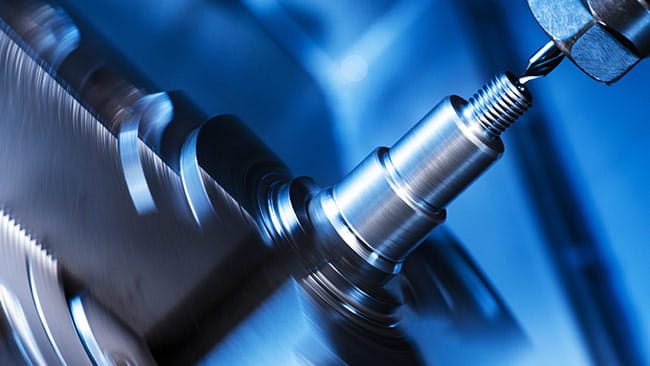
Manufacturing operations at RTX has an “innovation” focused mindset, realized in the many activities and initiatives, including agile and lean methodologies and factory continuous improvement projects that result in increased efficiencies improved quality and reduced costs. These projects and initiatives often depend on the creation and/or application of advanced manufacturing techniques and technologies. Many of RTX's innovative manufacturing solutions create intellectual property in the development of quality, cost-effective solutions.
Additive manufacturing (AM), also known as 3D printing, is a cutting edge technology that creates a physical product by adding material layer by layer according to its digital representation read from data stored in a CAD (Computer Aided Design) file. There are several advantages to utilizing this manufacturing method over conventional subtractive methods, which remove material using a cutting tool or laser. One advantage is speed to market. AM can deliver in days, products that would normally take weeks or months if manufactured conventionally. Another is the ability to create more complex configurations with lighter weights, resulting in superior performance characteristics. Also, the shorter cycle times and lower part counts achievable with AM can lead to lower product cost.
Exemplary US Patents
- US #10850346; Composition and method for fusion processing aluminum alloy
- US #10766097; Integration of ultrasonic additive manufactured thermal structures in brazements
- US #10654762; Additive manufactured combustible element with fuel and oxidizer
- US #10617035; Additively manufactured structures for gradient thermal conductivity
- US #10580611; Rapid 3D prototyping and fabricating of slow-wave structures, including electromagnetic meta-material structures, for millimeter-wavelength and terahertz-frequency high-power vacuum electronic devices
- US #10443958; Powdered metal as a sacrificial material for ultrasonic additive manufacturing
- US #10395800; Method of manufacturing an electrical cable using 3-D printing
- US #10137679; Material deposition system for additive manufacturing
- US #10123456; Phase change material heat sink using additive manufacturing and method
- US #10074449; Additively manufactured concrete-bearing radiation attenuation structure
Engineers are developing ways to print complex electronic circuits and microwave components – building blocks of sophisticated radars built by RTX. The current method of building microscopic circuits involves removing material to create a circuit pathway. In contrast, 3-D printing lays down just the material needed to build the electronic pathway. Circuits can already be printed with inkjet printers. The goal is to print more complicated circuits in three dimensions, with the very high resolution and performance of silicon.
Exemplary US Patents
- US #10849219; SNAP-RF interconnections
- US #10826147; Radio frequency circuit with a multi-layer transmission line assembly having a conductively filled trench surrounding the transmission line
- US #10692641; Method of additively manufacturing an impedance transformer
- US #10631405; Additive manufacturing technology (AMT) inverted pad interface
- US #10010020; Ultrasonic consolidation with integrated printed electronics
Communications
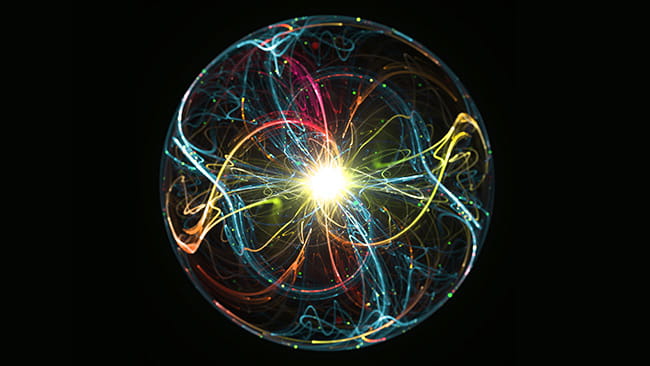
RTX has had to develop innovative solutions related to all aspects of communications. From new technology for uninterrupted military communications in contested environments to creating techniques that increase the current limits of optical communications technology to operating in the millimeter wave spectrum. RTX has worked along the entire EM spectrum to solve communications problems.
RTX has worked on all types of access points to communication networks all across the electro-magnetic spectrum, from visible light to VHF. Raytheon Technologies has worked with communication systems from hand held radios and mobile devices up to satellites in geostationary orbits.
Exemplary US Patents
- US #10686533; Balanced optical receivers and methods for detecting optical communication signals
- US #10530494; Systems and methods for detection and demodulation of optical communication signals
- US #10374743; Systems and methods for demodulation of wave division multiplexed optical signals
- US #10256917; Optically sensed demodulation systems and methods for optical communications
- US #10250292; Optical rake receiver using an etalon detector
- US #10243654; Electronically steered inter-satellite optical communication system and methods
- US #9444504; Apparatus and method for selective signal cancellation
- US #9332399; Just in time link transmission for a multi-frequency multi-rate multi-transceiver communication device
- US #9077449; High-bandwidth optical communications relay architecture
RTX has produced millions of AESA (active electronically scanned array) T/R modules and has decades of experience working with adaptive beamforming technologies. RTX has developed technology to support both analog and digital beamforming, which adapts signals to different scenarios, and MIMO, a type of beamforming.
Exemplary US Patents
- US #10698083; Method and apparatus of digital beamforming for a radar system
- US #10536302; Beamspace nonlinear equalization for spur reduction
- US #10374675; Direct digital synthesis based phase shift digital beam forming
- US #10340593; Systems and methods for phased array beam control
- US #10027026; Programmable beamforming system including element-level analog channelizer
- US #9628164; Beamforming engine
- US #8687679; Datalink system architecture using OTS/COTS modem for MIMO multipath sensing networks
RTX has developed technology for robust mobile ad hoc networks with dynamic spectrum access, disruption tolerant networking, and multiple cooperative transceivers on a compact, hand-held platform. "Dynamic spectrum access" senses which spectrum is in use and automatically shifts to the best available frequency. "Disruption tolerance" allows the network to continue to advance message traffic toward its intended destination even when there are outages or interruptions, and then delivers the message when the necessary path becomes available. Traditional IP networks simply drop the message packets whenever there is no complete path to the destination. "Multiple transceivers" mean that the network can scale in density or size and operate efficiently over multiple channels.
Exemplary US Patents
- US #10531500; Self-configuring backbone for mobile ad-hoc networks (MANETs)
- US #10333839; Routing a data packet in a communication network
- US #10237766; Estimation of available user data rate in a communications channel
- US #9680565; Free-space optical network with agile beam-based protection switching
- US #9369381; Disrupted adaptive routing
- US #9270372; Free-space optical mesh network
- US #8249101; Mobile ad hoc network configured as a virtual internet protocol network
- US #8027289; Ultra-low latency packet transport in ad hoc networks
- US #7924728; Systems and methods for energy-conscious communication in wireless ad-hoc networks
- US #7155263; Battery-conserving transmission and encoding method for wireless ad hoc networks
- US #7095732; Quality of service based media access control for mobile ad hoc networks
Scheduling communication and/or other node functions in space, time, and spectrum can be challenging. Scheduling nodes to allow fair access to the available resources can be even more challenging. Scheduling the nodes to guarantee access to the node can be even more challenging yet.
Exemplary US Patents
- US #10598763; System and method for concurrent communication of different signal types by a radar
- US #9853600; System and method for adaptive power modulation for power amplifier
- US #9736860; Systems and methods for scheduling of a shared resource
- US #9560653; Distributed assignment of frequency channels to transceivers over dynamic spectrum
- US #9237043; Method and apparatus to provide simultaneous sensing and transmission for dynamic spectrum access
- US #8289907; Interference avoidance for autonomous dynamic spectrum access systems
- US #7965671; Dynamic channel sharing using bandwidth metrics
Autonomy
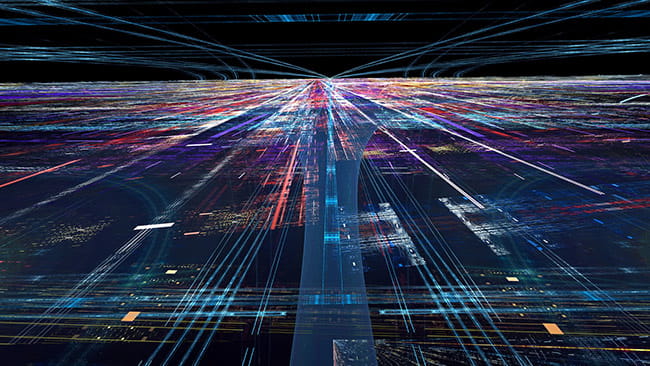
RTX has made many innovations related to unmanned vehicles and autonomous operations of those vehicles. RTX brings enhanced situational awareness, surveillance, navigation and communications to unmanned systems in some of the world's toughest environments.
RTX has developed multiple innovations related to different facets of navigation.
Exemplary US Patents
- US10739466; Mitigation of spoofer satellite signals
- US10353077; Position and motion informed navigation system
- US9766339; Global positioning system (GPS) and Doppler augmentation (GDAUG) and space location inertial navigation geopositioning system (SPACELINGS)
- US8144054; Satellite receiver and method for navigation using merged satellite system signals
- US8044857; System and method for correcting global navigation satellite system pseudorange measurements in receivers having controlled reception pattern antennas
- US7395156; System and method for geo-registration with global positioning and inertial navigation
- US7071871; Low power dissipation tracking architecture for GPS navigation systems
- US7032858; Systems and methods for identifying targets among non-targets with a plurality of sensor vehicles
- US6678590; Vehicle navigation system with vision system preprocessor using MPEG encoder
Dozens of small unmanned aircraft systems fly together, filling the sky. They fly together like a flock of birds, tracking their positions and maintaining their relative positions in the air. Human operators are not needed for every flying drone; instead, they direct the flock as one. RTX has developed innovative tools to autonomously control swarms of ground- and air-based drones.
Exemplary US Patents
- US9360320; Autonomous coordination of agents via attraction and repulsion
- US8494689; Autonomous coordination of agents
Sensors
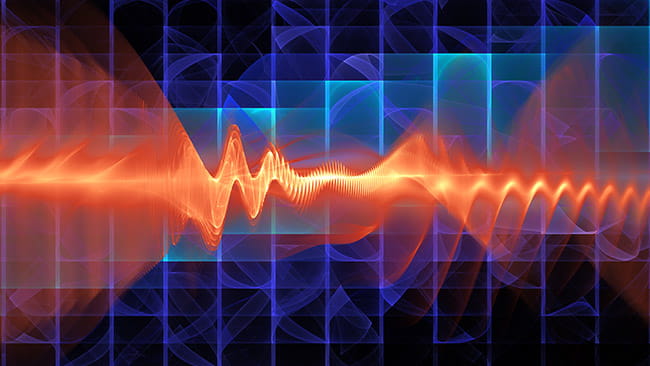
Sensing is one of RTX's core markets and most robust technology portfolios. RTX has decades of experience innovating in this space, serving broad needs with technologies ranging from small commercial sensors useful in the automotive space to world-wide, multi-sensor and multiple-domain systems. Our experience in design, development, deploying and maintaining these sensor systems through the entire world is second to none.
In addition to aerospace and defense, these sensor technologies are finding applications in automotive, commercial space, farming, and even smart cities. Raytheon Technologies' IP and technological expertise spans the spectrum.
From materials to focal plane arrays to complex integrated multi-sensor systems, RTX serves a wide breadth of applications in ground, maritime, airborne and space systems. We have solutions that detect ultraviolet (UV), visible, short wave infrared (SWIR), mid-wave infrared (MWIR), long wave infrared (LWIR), and very long wave infrared (VLWIR) bands of the electromagnetic spectrum including shared aperture systems.
Exemplary US Patents
- US #8218868; Method and apparatus for enhancing images
- US #7911687; Sighted device operable in visible-wavelength or electro-optical/visible-wavelength sighting modes
- US #8947647; Range-resolved vibration using large time-bandwidth product ladar waveforms
- US #9380273; Multiple aperture video image enhancement system
- US #6831688; Multispectral or hyperspectral imaging system and method for tactical reconnaissance
- US #7518645; CMOS active pixel sensor with improved dynamic range and method of operation
- US #7297951; Two f-number, two-color sensor system
- US #7002154; Optical system for a wide field of view staring infrared sensor having improved optical symmetry
- US #8471915; Self-correcting adaptive long-stare electro-optical system
- US #6999243; Fixed focus, optically athermalized, diffractive infrared zoom objective lens
- US #8072581; Laser range finding system using variable field of illumination flash lidar
- US #7792598; Sparse sampling planner for sensor resource management
- US #10115764; Multi-band position sensitive imaging arrays
RTX’s radars and multifunction RF systems are built on a 60-year tradition of innovation. These systems are getting smaller and more power efficient all while incorporating some of the newest technologies pushing their performance and capabilities to new heights. These high performing systems incorporate our best technology including active electronically steered array (AESA), digital receiver/excited (DREX), and digital beam forming.
Exemplary US Patents
- US #9354633; System and method for ground navigation
- US #8515600; System and method for sensor-based terrain avoidance
- US #8730088; Radar coherent processing interval scheduling via ad hoc network
- US #7675458; Dual beam radar system
- US #7567203; Classification system for radar and sonar applications
- US #6977610; Multiple radar combining for increased range, radar sensitivity and angle accuracy
- US #7183969; System and technique for calibrating radar arrays
Technologies that make the underwater environment accessible to navigation, communication, detection and tracking.
Exemplary US Patents
- US #7046582; Method and system for synthetic aperture sonar
- US #6683819; Sonar array system
- US #7151483; System and method for concurrent operation of multiple radar or active sonar systems on a common frequency
- US #10768265; Systems and methods for direction finding using compressive sensing
Making the most of your sensors means knowing how to use them efficiently and turning the resulting data into useful information.
Exemplary US Patents
- US #8208873; Method and apparatus for adjusting waveform parameters for an adaptive air interface waveform
- US #8743708; Device and method supporting cognitive, dynamic media access control
- US #7787426; Adaptive control channel initialization operations for autonomous dynamic spectrum access systems
- US #7792598; Sparse sampling planner for sensor resource management
- US #10825160; Spatially dynamic fusion of images of different qualities
Semiconductors
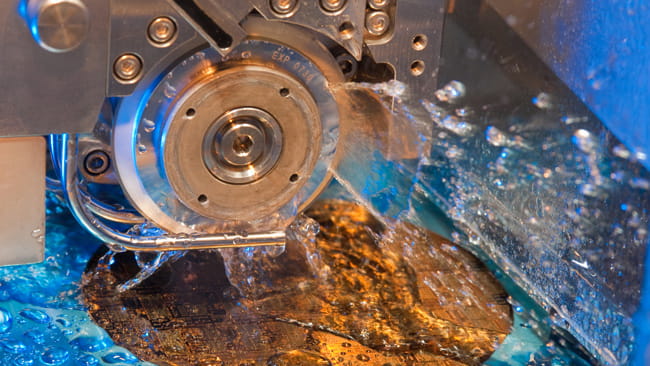
RTX is constantly evolving — setting a challenging pace as a leading provider of semiconductor capability in defense and civil solutions. At RTX's Radio Frequency (RF) Components facility, engineers are producing the next generation of gallium nitride (GaN) monolithic microwave integrated circuit (MMIC) amplifiers that provide advanced capabilities to our emerging systems. RTX continues to push the state of the art in this space in both power and operating frequency.
RTX is a recognized leader in producing RF gallium nitride components, which emit five times the radio frequency power of previous technologies. Our facility and foundry provide a complete services solution, including circuit design, layout, modeling, fabrication, test and evaluation, module design and device prototyping.
Exemplary US Patents
- US #7884373; Gallium nitride layer with diamond layers
- US #7226850; Gallium nitride high electron mobility transistor structure
- US #7508267; GaN based digital controlled broadband MMIC power amplifier
- US #9160289; Broadband power amplifier having high efficiency
- US #8391662; Monolithic optically-driven high frequency power amplifier
- US #9478858; Multi-chip module architecture
The 3D heterogeneous integration (3DHI) of high power and efficiency gallium nitride (GaN) power amplifiers (PAs) with functionally dense Si CMOS (complementary metal-oxidesemiconductor) logic is creating a new class of compact, digitally enhanced RF integrated circuits (ICs) that will revolutionize radar and other multifunction systems.
Exemplary US Patents
- US #9010190; Stress isolated mems structures and methods of manufacture
- US #8975105; Hermetically sealed wafer packages
- US #8736045; Integrated bondline spacers for wafer level packaged circuit devices
- US #10447208; Amplifier having a switchable current bias circuit
- US #10566896; Heterogeneously integrated power converter assembly

